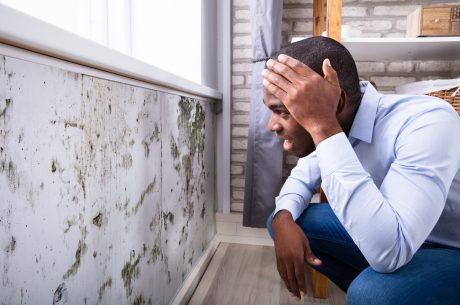 Mold is a common sight in many areas of the home where there is dampness and warmth. Unfortunately, kitchens are prone to mold growth as well, especially if they’re poorly ventilated or if there are water leaks. Although it’s better to allow professional mold removal companies to get rid of the mold problem in your kitchen, you can clean up small areas yourself with proper guidance. Before deciding to tackle the mold removal job in your kitchen yourself, don’t forget to wear goggles, dust mask, protective clothing and gloves.
Mold is a common sight in many areas of the home where there is dampness and warmth. Unfortunately, kitchens are prone to mold growth as well, especially if they’re poorly ventilated or if there are water leaks. Although it’s better to allow professional mold removal companies to get rid of the mold problem in your kitchen, you can clean up small areas yourself with proper guidance. Before deciding to tackle the mold removal job in your kitchen yourself, don’t forget to wear goggles, dust mask, protective clothing and gloves.
Mold on Grout
- Moisten the moldy grout first to prevent dry mold spores from being stirred up into the air.
- Use a scrubbing brush and a mold killing product or a mixture of warm water and detergent into a spray bottle to scrub off the mold.
- Clean the grout with a soft paper towel and continue scrubbing off the mold until it’s gone.
- Tips to remove mildew from grout can be found here.
Mold in the Sink Area
- Remove every item from the moldy area and place them into sealed plastic bags. Discard or clean the items, depending on the amount of mold on them.
- Identify the water problem, such as a leaky pipe beneath the sink or damaged faucet. Fix the water problem and dry the area using fans and dehumidifiers.
- Seal off the kitchen by closing windows and doors to prevent mold spores from spreading in the rest of your home. Use plastic sheeting and duct tape to cover any openings.
- Clean the moldy surfaces using a scrubbing brush, a firm sponge, and a mixture of water and detergent or a mold killing product in a spray bottle.
- After cleaning, rinse the area and allow it to dry completely.
Mold in Cabinets
- Immediately fix the moisture problem in the kitchen that causes mold in the cabinets.
- Make a solution of half water and half detergent by combining it into a spray bottle, or use a commercial mold cleaner.
- Use the solution and a scrubbing brush (or toothbrush for corners and hard-to-reach areas) to remove the mold.
- Wipe the residue with a wet clean rag and rinse with a dry rag. Accelerate drying using fans and allow the area to dry completely.
Mold on Ceiling and Walls
- To clean and prevent mold on walls and ceiling, identify and fix the water leaks on the roof and behind walls, or the condensation problem.
- If there is mold on porous surfaces, such as drywalls, they usually need to be removed and replaced. Mold on non-porous walls can typically be removed without damaging the wall.
- To clean the mold on the ceiling, use a stepladder to get to the mold and a paint scraper to remove the paint. Then, remove mold with a firm sponge and a mold removal solution of water and detergent, or a commercial product.
- Don’t forget to provide plenty of ventilation and fix the moisture problem(s) to prevent mold from recurring. Before repainting, add mold inhibitors to paints.
The bathroom is also a common area in the home for mold growth. Tips for bathroom mold removal and prevention are available here. For professional fire, water, and mold restoration services, contact your local PuroClean office.



 PuroClean of Broken Arrow
PuroClean of Broken Arrow